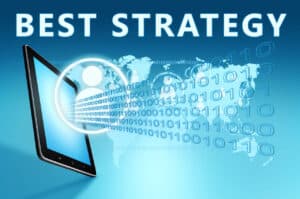In the competitive field of sales, conversion rates are more than mere figures. They serve as the pulse of your business, reflecting your team’s effectiveness and the value your offerings bring to customers.
But how can you enhance these rates? In this guide, we’ll explore strategies to optimize your field sales marketing and increase your conversion rates.
Understanding Sales Conversion Rates
Before we dive into the strategies to turbocharge your sales conversions, let’s demystify what these rates really mean.
Simply put, a sales conversion rate is the percentage of leads or prospects that become paying customers. It’s a crucial metric that reflects the effectiveness of your sales and marketing efforts.
Reaping the Rewards: Benefits of High and Stable Conversion Rates
Having a high or stable conversion goes beyond just a number; it signifies your sales expertise and ignites business growth. Here are eight advantages that come with achieving high or stable conversion.
- Increased Revenue: More conversions lead to more sales, resulting in higher revenue for your business.
- Better ROI: A high conversion means you get more value from your marketing and sales investments.
- Improved Customer Loyalty: High conversion rates show that you meet or exceed expectations, boosting loyalty and retention.
- Competitive Advantage: A high conversion performance sets you apart from competitors, showcasing your ability to effectively convert prospects into clients.
- Accurate Forecasting: Stable conversion rates enable you to make more precise sales forecasts, aiding in strategic planning and decision-making.
- Increased Market Share: More conversions can lead to an expanded market share, solidifying your position and influence in the market.
- Enhanced Brand Reputation: A high conversion performance enhances your brand reputation, demonstrating that customers trust and value your products or services.
- Growth Opportunities: High conversions open doors to business growth and expansion. With higher revenue and a larger consumer base, you can explore new markets and seize new opportunities.
Key Performance Indicators (KPIs) That Impact Conversion Rates
Conversion rates are not isolated figures. They are influenced by various factors that can be optimized to enhance your conversions. Here are some essential Key Performance Indicators (KPIs) that directly affect sales.
- Lead Quality: The quality of your leads plays a vital role in your conversion rates. Good leads are more likely to convert.
- Website Traffic: The number and quality of visitors to your website or landing page can significantly impact your conversion performance. Targeted traffic improves the chances of higher conversions.
- Customer Engagement: The level of engagement your customers have with your brand directly influences your sales transactions. Engaged leads are more inclined to convert.
- Sales Cycle Length: The duration of your sales cycle can impact your conversions. Shorter cycles often result in higher rates.
- Customer Satisfaction: Satisfied customers are more likely to convert, positively affecting your conversion rates.
- Product/Service Quality: The quality of your product or service holds great weight in driving conversions. When leads perceive value in what you offer, they are more inclined to convert.
10 Tools to Measure and Improve Your Field Sales Conversion Rates
In today’s digital era, there are numerous tools available to help you track and enhance your field conversion rates. Here are ten tools that can assist you in achieving higher conversions.
- Field Sales Management Software: Field sales software like Beest.app is a powerful tool that offers real-time insights into field activities. Such software helps track and analyze performance, identify trends, and make data-driven decisions to improve conversion rates.
- Google Analytics: This free tool by Google provides valuable insights into website traffic and conversions.
- Heatmap Tools: Tools like Crazy Egg and Hotjar show how users interact with your website, highlighting areas for improvement.
- A/B Testing Tools: Optimizely and VWO allow you to test different website elements or marketing campaigns to determine the most effective approaches.
- Email Marketing Software: Tools like Mailchimp and Constant Contact aid in managing email campaigns and tracking their success.
- Social Media Analytics: Platforms such as Facebook Insights and Twitter Analytics offer data on social media campaigns and their impact on conversion rates.
- SEO Tools: SEMrush and Moz assist in optimizing your website and landing page for search engines, potentially driving more targeted traffic.
- Sales Analytics Tools: Gong and SalesLoft provide valuable insights into sales calls and meetings, helping improve techniques.
- Survey Tools: SurveyMonkey and Google Forms facilitate gathering customer feedback, providing valuable insights for boosting conversions.
- Conversion Rate Optimization (CRO) Tools: Unbounce and Instapage optimize landing pages for higher conversion rates.
Typically, a good conversion rate ranges from 2% to 5%. But remember, these numbers can vary depending on your industry and offerings. In some sectors, an outstanding conversion performance might exceed 10%.
But our aim is not just to meet these averages; we strive to exceed them. That’s where our range of strategies comes in, providing you with the tools to elevate your conversions to new levels.
1. Targeting the Right Leads
In field sales, targeting the right leads involves identifying and focusing on potential customers who are most likely to convert. It’s about recognizing that not all leads are equal and that some have a higher chance of becoming customers.
This process involves effective lead qualification and segmentation, which is based on understanding your target audience’s demographics, interests, and purchasing behavior.
By prioritizing leads with a higher likelihood of converting, you improve your chances of achieving your goals. This approach not only increases your conversion rates but also optimizes your efforts.
Instead of spreading your resources thin across numerous leads, you focus on the most promising ones. This strategy ensures that your team’s time and effort are well-utilized, resulting in enhanced productivity and profitability. Remember, in sales, quality often outweighs quantity.
Tips for Targeting the Right Leads:
- Understand Your Audience: Know who your ideal customer is. What are their demographics, interests, and purchasing behaviors?
- Evaluate Your Leads: Assess the value of each lead using a scoring system. This allows you to prioritize leads with the greatest conversion potential.
- Group Your Leads: Categorize your leads based on their traits and actions. This enables you to customize your strategies for each group, maximizing their impact.
- Leverage CRM Software: Utilize Customer Relationship Management (CRM) tools to efficiently track and handle your leads. These tools offer valuable insights to help with lead evaluation and segmentation.
- Leverage Analytics: Use data analytics to understand which types of leads are converting the most. This can help you refine your targeting strategy.
- Experiment and Improve: Regularly experiment with your targeting approaches and make adjustments based on the outcomes. Stay flexible as what proves effective today might not be the same tomorrow.
- Train Your Sales Team: Ensure your team is well-trained in lead qualification and segmentation. They should be able to identify high-value leads and focus their efforts on them.
2. Enhancing the Value Proposition
Your value proposition is the unique value and benefits your product or service offers to customers. It sets you apart.
Improving your value proposition involves making it more appealing and convincing to potential customers. This means clearly explaining how your product or service can solve their problems or meet their needs better than competitors.
Think of your value proposition as the core of your sales pitch. It grabs prospects’ attention and convinces them to choose you over competitors. A strong value proposition directly addresses customer needs and shows how your offering can be the solution they seek.
By enhancing your value proposition, you can create a stronger connection with prospects, motivating them to convert. It’s like shining a spotlight on the unique value you offer, making it irresistible to your potential customers.
Tips for Enhancing the Value Proposition
- Know Your Customers’ Needs: To craft an enticing value proposition, grasp your customers’ requirements and demonstrate how your product or service fulfills them.
- Emphasize Your Uniqueness: What sets your offering apart? How does it distinguish itself from competitors? Highlight these aspects in your value proposition.
- Be Clear and Simple: Make your value proposition easy to understand by avoiding complicated language and keeping it concise.
- Highlight the Benefits: Emphasize how your product or service can enhance customers’ lives and focus on the advantages it offers, not just its features.
- Experiment and Learn: Test various versions of your value proposition to discover which one connects best with your customers.
- Make It Prominent: Ensure your value proposition is prominently displayed in all your marketing and sales materials.
- Train Your Sales Team: Ensure your team understands and can effectively communicate your value proposition.
3. Optimizing the Sales Funnel
The sales funnel represents the journey a prospect takes from the first point of contact with your company to the final purchase. It’s a series of stages that a prospect goes through, each presenting an opportunity for conversion.
Optimizing the sales funnel means analyzing and improving each of these stages to make the journey smoother for your prospects. It involves removing any barriers or friction points that may hinder conversion and providing a seamless and enjoyable experience for your prospects.
Imagine your sales funnel as a highway. The smoother and more streamlined the highway, the faster and more comfortably your prospects can travel to their destination, which in this case, is making a purchase.
This not only makes their journey more enjoyable but also increases their likelihood of reaching the end of the funnel and converting. It’s about creating a positive and seamless experience that guides your prospects toward conversion.
Tips for Optimizing the Sales Funnel
- Analyze Each Stage: Understand what happens at each step of the sales funnel and identify any obstacles or points of resistance that may impede conversion.
- Simplify the Process: The simpler the process, the easier it is for prospects to convert. Remove any unnecessary steps or complexities.
- Enhance User Experience: Make sure your website or landing page is user-friendly and delivers a positive browsing experience. This can greatly influence your conversions.
- Leverage Technology: Use tools and software to automate and streamline your process. This can help optimize your sales funnel and improve conversion rates.
- Personalize the Journey: Personalize the sales journey for each prospect based on their behavior and preferences. This can make the journey more engaging and increase conversions.
- Follow Up: Don’t forget to follow up with prospects who have left the funnel. They may still be interested and just need a little nudge to convert.
- Test and Refine: Continually test different strategies and refine your sales funnel based on the results.
4. Personalizing the Customer Experience
Customizing the customer experience means adapting your marketing messages and sales approach to suit the unique needs and preferences of each prospect.
It’s about showing your customers that you appreciate them and comprehend their requirements, leading to a more captivating and pertinent experience.
Personalization is like speaking your customer’s language. By customizing your approach to their individual needs and preferences, you establish a profound connection. This not only makes your message more powerful and engaging but also builds trust and connection with your customers.
When customers feel recognized and valued, they are more likely to make a conversion. Personalization is not merely a strategy, but a potent tool for cultivating stronger customer relationships and enhancing your conversions.
Tips for Personalizing the Customer Experience
- Know Your Customers: Familiarize yourself with your customers’ needs, preferences, and behaviors. The better you know them, the more you can personalize their experience.
- Segment Your Audience: Group your audience based on their characteristics and behaviors. This allows you to tailor your approach to each group.
- Use Personalized Messaging: Tailor your marketing messages to each customer. This can make your message more relevant and engaging.
- Use Technology: Utilize tools and software that enable personalization. This helps you provide a customized experience to a larger audience.
- Offer Personalized Recommendations: Recommend products or services based on customers’ behavior and preferences.
- Customize Your Sales Approach: Adapt your sales approach to each customer, making them feel valued and boosting their conversion potential.
- Test and Refine: Continually test your personalization strategies and refine them based on the results.
5. Utilizing Persuasive Tactics
In field sales, this involves using techniques that instill trust and urgency in your prospects, compelling them to convert. These tactics can include social proof (customer testimonials, case studies), scarcity (limited-time offers, low stock notifications), and authority (endorsements, certifications).
By instilling trust and creating a sense of urgency, these tactics compel your prospects to take action. They tap into your prospects’ emotions and decision-making processes, nudging them toward conversion. When used effectively, persuasive tactics can significantly boost your conversions.
Tips for Utilizing Persuasive Tactics
- Use Social Proof: Showcase customer testimonials, case studies, and positive reviews. This can build trust and credibility.
- Create a Sense of Scarcity: Use limited-time offers or low-stock notifications to create a sense of urgency. This can compel prospects to act quickly.
- Leverage Authority: Showcase endorsements, certifications, or awards to build authority and trust.
- Use Persuasive Language: Use language that is persuasive and compelling. This can impact how your prospects make decisions.
- Identify Customer Challenges: Learn about the challenges your customers are experiencing and how your offering can provide solutions. This will enable you to create a compelling message.
- Offer a Guarantee: Offering a money-back guarantee or a free trial can reduce risk and increase trust, making prospects more likely to convert.
- Test and Refine: Continually test different persuasive tactics and refine them based on the results.

6. Leveraging Technology and Tools
Using technology and tools in sales means utilizing digital resources to improve your process and increase conversions. These resources can include CRM software, mobile apps, and sales enablement tools.
Technology acts as the engine that drives your efforts, simplifying tasks, providing insights, and enhancing the customer experience. This increases efficiency, and productivity, and ultimately improves your conversion rates.
In today’s digital age, technology is essential for maximizing sales performance.
Tips for Leveraging Technology and Tools
- CRM Software: Manage customer relationships, track activities, and gain valuable insights with CRM software.
- Mobile Apps: Access product information and customer data on the go for increased efficiency and responsiveness.
- Sales Enablement Tools: Empower your team with resources to effectively engage with customers and close deals.
- Automation: Streamline repetitive tasks like email follow-ups and data entry with automation tools, freeing up time for more important activities.
- Analytics: Gain insights into sales performance and customer behavior to make data-driven decisions using analytics tools.
- Stay Updated: Stay current with industry technology trends and tools for a competitive advantage.
- Sales Team Training: Provide comprehensive training on tool usage to enhance the productivity and effectiveness of your team.
7. Analyzing and Adapting to Data
Analyzing and adapting to data in sales involves tracking key metrics like conversion rates, sales activities, and pipeline metrics, and using these insights to identify areas of improvement and make data-driven decisions. It’s about using data as a compass to guide your efforts and optimize your performance.
By analyzing and adapting to data, you can identify what works and what needs improvement. It provides a clear view of your sales performance, enabling strategic changes and higher conversions.
In field sales, data is not just information, but a driver for improvement and growth.
Tips for Analyzing and Adapting to Data
- Track Important Metrics: Keep an eye on key metrics such as conversion rates, activities, and pipeline metrics. They provide valuable insights into your sales performance.
- Use Analytics Tools: Use tools that collect and analyze data to gain valuable insights. These tools help you make data-driven decisions.
- Use Data for Decision-Making: Utilize the insights from your data to make informed choices. This optimization can improve performance and increase conversions.
- Identify Trends: Spot trends in your data to understand the bigger picture. This enables strategic adjustments.
- Test and Refine: Use your data to test different strategies and refine them based on the results.
- Stay Adaptable: Be open to change and willing to adapt based on your data. The sales landscape is constantly changing, and so should your strategies.
- Train Your Sales Team: Ensure your team understands how to use data to their advantage. This can boost their effectiveness and decision-making skills.
8. Continuously Training and Developing Your Sales Team
Investing in the continuous training and development of your sales team is essential for maximizing their potential in converting leads. By providing continuous learning opportunities and resources, you equip your team with the skills and knowledge to succeed.
Fostering a culture of ongoing improvement and staying updated with industry trends and sales techniques are vital aspects of this process.
Your sales team is the powerhouse of your efforts. When they receive proper training and support, they can work more efficiently and effectively. By investing in their ongoing development, you ensure that your sales team consistently excels in converting leads into loyal customers. This not only drives higher conversions but also cultivates a culture of excellence and ongoing growth.
In the world of sales, learning never stops, and neither should your training and development efforts.
Tips for Continuously Training and Developing Your Sales Team
- Provide Ongoing Training: Offer regular training sessions to keep your sales team updated on product knowledge, techniques, and industry trends.
- Encourage Self-Learning: Inspire your team to take charge of their own learning and development. This fosters a culture of continuous improvement and self-growth.
- Practice Role-Playing: Engage your sales team in role-playing exercises to enhance their sales pitch and communication skills.
- Facilitate Best Practice Sharing: Encourage your team to exchange their successful strategies and best practices. This cultivates a culture of knowledge-sharing and collective advancement.
- Provide Constructive Feedback: Provide regular feedback to your sales team to help them improve. Remember, feedback is a tool for growth, not criticism.
- Acknowledge and Reward Learning: Show appreciation and reward your team for their learning endeavors. This encourages ongoing growth and development.
- Offer Training Support: Provide support to your sales team by investing in training resources like online courses, workshops, and books. These resources offer valuable learning opportunities to enhance their skills and knowledge.
9. Offering Incentives and Rewards
Offering incentives and rewards in sales involves implementing a performance-based incentive program to motivate your team to strive for higher conversions.
It’s about recognizing and rewarding your sales team’s efforts and achievements and fostering a culture of excellence and achievement.
By offering incentives, you can enhance their morale and productivity, leading to improved conversion rates. It’s about fostering a win-win scenario where your team is motivated to excel, and your business thrives as a result.
Tips for Offering Incentives and Rewards
- Implement a Performance-Based Incentive Program: Reward your sales team based on their performance. This can motivate them to strive for higher conversions.
- Recognize Top Performers: Recognize and reward your top performers. This can boost their morale and motivate others to perform better.
- Offer Non-Monetary Rewards: Incentives and rewards don’t always have to be monetary. Consider offering other forms of rewards like recognition, additional time off, or opportunities for growth and development.
- Fair and Transparent: Ensure your incentive program is fair and transparent, so your team understands the criteria for earning rewards.
- Flexibility is Key: Keep your incentive program flexible and adaptable to accommodate different motivations among your sales reps. Offering a range of rewards can cater to individual preferences.
- Celebrate Success: Celebrate your sales team’s successes. This can boost morale and create a positive work environment.
- Review and Refine: Regularly review and refine your incentive program based on feedback and results. This can ensure its effectiveness and relevance.
10. Seeking Customer Feedback and Referrals
Seeking customer feedback and referrals involves requesting feedback from your customers to identify areas of improvement and encouraging them to refer your products or services to others. It’s about building a strong referral network that boosts your lead generation and conversion rates.
Customer feedback and referrals are like the pulse of your business. They provide valuable insights into your performance and open doors to new opportunities. By seeking customer feedback, you can identify areas of improvement and make necessary adjustments to boost your conversions.
And by encouraging referrals, you can tap into your customers’ networks and generate high-quality leads. Remember, a satisfied customer is your best advocate.
Tips for Seeking Customer Feedback and Referrals
- Request Feedback: Regularly request feedback from your customers. This can provide valuable insights into your performance and areas of improvement.
- Collect Feedback: Utilize customer feedback tools to gather and analyze feedback. This helps you gain insights into your customers’ needs and expectations.
- Promote Referrals: Encourage satisfied customers to refer your products or services to others. This can enhance lead generation and increase conversion rates.
- Offer a Referral Program: Consider offering a referral program to incentivize your customers to refer others.
- Act on Feedback: Don’t just collect feedback, act on it. Show your target market that you value their feedback and are willing to make improvements based on it.
- Follow Up: Follow up with clients who have provided feedback or made a referral. This can show your appreciation and foster stronger relationships.
- Train Your Sales Team: Ensure your team is trained in seeking and handling customer feedback and referrals. This can boost their effectiveness and client relations skills.

Final Thoughts
In the dynamic realm of field sales, conversion rates act as your guiding compass to achieve success. They serve as the pulse of your sales efforts, reflecting the effectiveness of your strategies.
Elevating these rates goes beyond mere numerical growth; it involves optimizing your entire sales process, understanding your audience, and providing value that resonates with their needs. The strategies outlined in this article provide a roadmap to achieve higher conversions.
Remember, the journey to higher conversions is not a sprint but a marathon, demanding persistence, adaptability, and an unwavering pursuit of excellence.
So, equip yourself with these strategies, ignite your sales passion, and embark on the path to success. Plus, be sure to invest in reliable and credible field sales tools like Beest.app.


